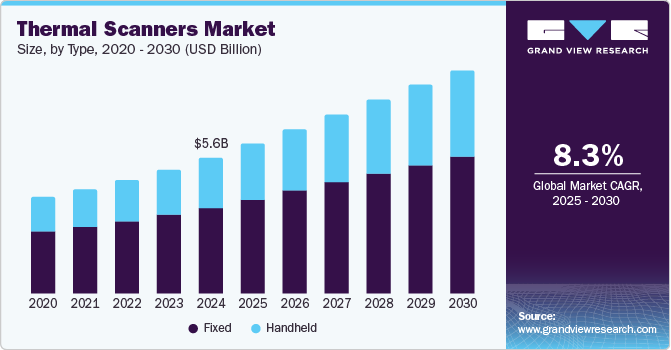Electrical Resistor Market Size, Share & Trends Analysis growing at a CAGR of 5.9% from 2024 to 2030

The global electrical resistor market size was estimated at USD 5.83 billion in 2023 and is expected to grow at a CAGR of 5.9% from 2024 to 2030. The market is witnessing substantial growth driven by the escalating demand for electronic devices and the rapid advancements in technology. Resistors are fundamental components in electronic circuits, responsible for controlling current flow, dividing voltages, and protecting components from excessive current. The market is buoyed by several key trends, drivers, and opportunities that are shaping its landscape. The market growth is primarily driven by the expanding electronics industry.
Request a free sample copy or view report summary: https://www.grandviewresearch.com/industry-analysis/electrical-resistor-market-report/request/rs1
Consumer electronics, including smartphones, tablets, and wearable devices, rely heavily on resistors for their operation. The proliferation of these devices, alongside the continuous innovation in features and functionalities, ensures a steady demand for resistors. The automotive industry is another major driver, especially with the increasing adoption of electric vehicles (EVs) and advanced driver-assistance systems (ADAS). These technologies require a multitude of resistors for battery management, power conversion, and various control systems.
Moreover, the transition to renewable energy sources such as solar and wind power is boosting the demand for resistors in energy management systems. Resistors are crucial in controlling and distributing electrical energy efficiently in these systems. Additionally, the increasing focus on energy efficiency and smart grid technologies is further propelling the market. Industrial automation and the shift towards Industry 4.0 are also significant drivers, as modern industrial systems rely on resistors for accurate and efficient operation.
One of the predominant trends in the electrical resistor market is the miniaturization of electronic components. As devices become smaller and more integrated, the demand for compact, high-performance resistors is increasing. Additionally, the rise of IoT (Internet of Things) devices is propelling the need for resistors that can support complex, interconnected systems. Another significant trend is the push towards higher precision and reliability, particularly in sectors such as automotive, aerospace, and medical devices, where safety and performance are paramount.
The market presents numerous opportunities for growth and innovation. The development of advanced materials and technologies is opening new avenues for resistor performance enhancements. For instance, the use of materials like carbon composites and thin films can lead to resistors with higher precision and stability. Additionally, the sustainability trend is creating opportunities for resistors designed to be more energy-efficient and environmentally friendly. The increasing integration of AI and machine learning in electronic systems also presents opportunities for the resistor market. These technologies require sophisticated electronic components that can support complex algorithms and processing power, thereby driving the demand for high-quality resistors.
Type Insights
The fixed resistor segment dominated the market in 2023 and accounted for a more than 34% share of global revenue. Fixed resistors hold a dominant position in the electrical resistors market due to their widespread use across various applications. These resistors are favored for their reliability, stability, and cost-effectiveness, making them integral components in consumer electronics, automotive, and industrial applications. The simplicity of their design, with a fixed resistance value that doesn’t change with temperature or electrical load, contributes to their widespread adoption. The fixed resistor segment is characterized by a vast array of types, including carbon film, metal film, and wire-wound resistors, each catering to different performance requirements. This diversity ensures that fixed resistors remain a staple in both low-power applications and high-precision tasks, underpinning their continued market dominance.
The variable resistors segment is projected to witness significant growth from 2024 to 2030. Variable resistors, including potentiometers and rheostats, represent the fastest-growing segment in the electrical resistors market. Their ability to adjust resistance in a circuit dynamically makes them crucial for applications requiring fine-tuning and calibration, such as audio equipment, instrumentation, and advanced control systems. The rise in consumer demand for customizable electronic devices and the increasing complexity of automotive and industrial systems drive the growth of variable resistors. Innovations in material science and miniaturization further propel this segment, enabling more compact and efficient designs. As electronics continue to evolve towards greater precision and adaptability, the variable resistor market is poised for significant expansion.






